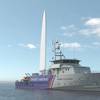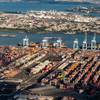The Great Lakes Ballast Water Challenge Explained
Skuld P&I Club in a members advisory explores the regulatory framework and practical issues that exist in both Canada and the USA with input from BLG of Montreal and Chalos & Co of New York.
The situation
Members will be aware of the continuing progress of the Ballast Water Treatment Convention along the road to ratification at the IMO, with the present information showing 40 nations representing 30.25% of global GRT having ratified. The upcoming MEPC in October of this year will be a key meeting at which the present issues will again be the subject to intense debate.
It is worth remembering, however, that it was the invasion of the Great Lakes, 30 years ago, by the Zebra Mussel from Europe, that proved to be a significant catalyst in leading to the present day convention.
Given the length of time it took for the Convention to be prepared, not before 2004, and ten years later it is still not ratified, it should come as no surprise that the Great Lakes nations of Canada and the USA have already implemented legislation to regulate ballast water issues in order to protect the environment of the Lakes and their surrounding rivers.
Loss prevention advice
For shipowners familiar with calls to / from the Great Lakes, these issues should be well familiar to them and no doubt they will have been dealing with the practical reality of managing compliance with both Federal and State level rules and regulations for some time.
Yet, even for those familiar with this part of the world, it is important to ensure that they keep fully up to date with further developments and regulations, not least the further co-operation between Canada and the USA pursuant to the Great Lakes Water Quality Agreement of 2012, as well as the expected announcements of USCG "type approved" systems - something the industry should expect to be informed about within the first half of 2015 (all going well).
In the meantime, despite intense debate, the progress of the IMO Convention appears to be on course to a possible full ratification, but close attention needs to be paid to the pending MEPC meeting and its outcome.
Given the very significant impact that the Convention will have, members and their technical managers are advised to ensure that they are "ready" well in advance any possible coming in to force (12 months post full ratification by 30 countries / 35% of World GRT). That means understanding now what systems a vessel may need to comply, and what it will take in terms of time and money to ensure vessels are ready when the time comes.
While IMO and USCG approved system announcements are pending, which may mean owners want to "wait & see", it is still necessary to plan and budget now for the very great likelihood of the coming in to force of the Convention within the next two to three years.
The document is available at: http://www.skuld.com/topics/environment/ballast-water/america/usa-the-ballast-water-challenge-on-the-great-lakes/












